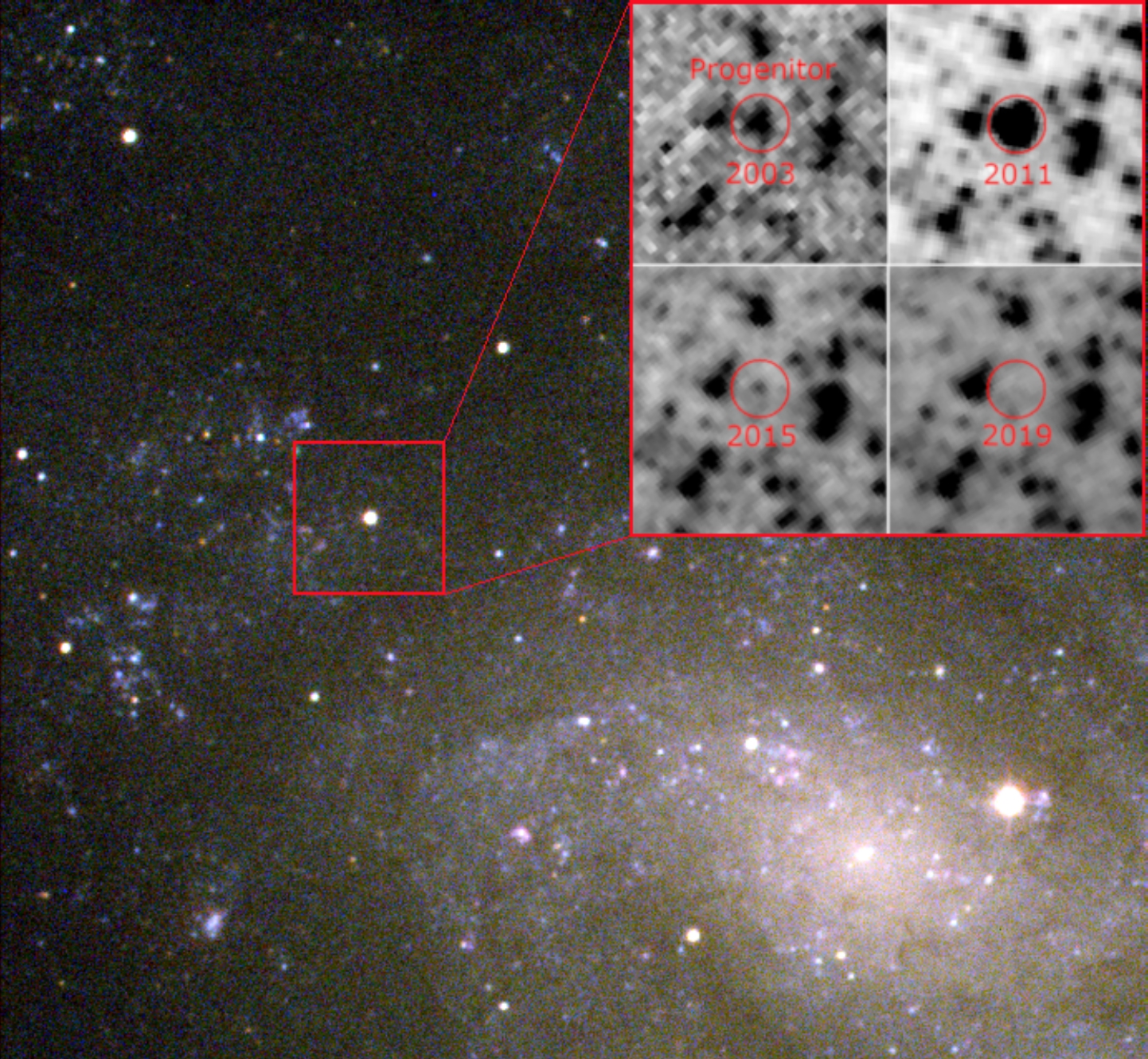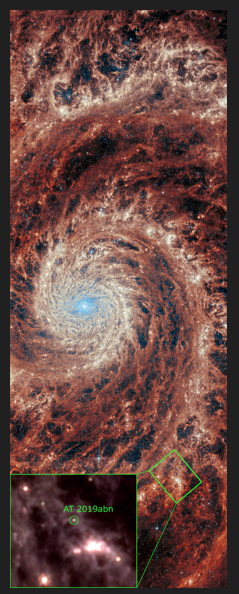The name “Intermediate Luminosity Red Transients” or “ILRTs” might not be an astronomical term you are familiar with, but these rare, brightness-shifting stars have been quite the mystery in astronomical terms.
Now, a team of cosmic detectives, who have dubbed their work “A Study in Scarlett” after the Arthur Conan Doyle novel that first introduced the world to Sherlock Holmes, may have finally cracked the case.
The stellar Sherlocks from across the globe suggest that ILRTs are stars that don’t just erupt when they reach the end of their lives but experience “truly terminal” and destructive supernova explosions.
“Following the discovery of three new ILRTs in 2019, we seized the opportunity to study and better understand these phenomena,” team leader and National Institute for Astrophysics (INAF) researcher Giorgio Valerin said in a statement. “We have, therefore, collected data for years through telescopes scattered around the world and even several telescopes in orbit.
“We have also resumed the observation campaign of NGC 300 OT, the closest ILRT ever observed, at ‘just’ six and a half million light-years from us.”
The ground-based instruments used included La Palma, La Silla, Las Campanas, and Asiago, while data was also collected from space-based telescopes, including the James Webb Space Telescope (JWST), the Neil Gehrels Swift Observatory (SWIFT), and the Spitzer space telescope.
The Sign of Four
ILRTs have been somewhat confusing because their brightness is between that of novas, stellar explosions that stars survive, and “classical” supernovas in which a massive star is destroyed, leaving behind a neutron star or a black hole.
The team reached their findings by observing the evolution of four ILRTs. They hoped that this would help them determine whether the star survives these explosions or is completely wiped out.
The key to solving this mystery was observing ILRTs like NGC 300 OT over long periods of time.
“The first images of NGC 300 OT date back to 2008, and in this work, we have observed it again to study its evolution after more than ten years,” Valerin said. “The analysis of the images and spectra collected during these observing campaigns has allowed us to monitor the evolution over time of our targets, obtaining information such as the brightness, temperature, chemical composition, and gas velocities associated with each ILRT we have studied.”

The Spitzer observations of NGC 300 OT showed this ILRT dimming to a tenth of the brightness of the progenitor star that created this eruption over the course of seven years. Spitzer’s images of NGC 300 OT ended when they faded below the detection threshold of this NASA space telescope, which retired in 2020.
Just as Holmes made his name investigating many cases, the team had another set of ILRT data to peruse.
Analyzing JWST observations of the ILRT AT 2019abn located in the nearby galaxy Messier 51 (M51), they found that this transient is declining in brightness in such a way that it is likely to meet the same fate as NGC 300 OT by becoming fainter than its progenitor star.
From this information, the team concluded that ILRTs are explosions that see the total destruction of a star. That is despite the fact that ILRTs appear to be significantly weaker than “classical” core-collapse supernovas.
The question is, how do they remain fainter than similar supernova events?
The Red Hand League
The team of cosmic detectives suggests that a defining factor in the make-up of ILTRs could be a dense shroud of gas and dust that surrounds the progenitor stars.
This cocoon is heated to temperatures as great as around 10,300 degrees Fahrenheit (5,700 degrees Celsius) over just a few days. The peak in temperature corresponds with a peak in brightness for the ILRT.
As this happens, the gas in this stellar shroud accelerates to speeds as great as 1.6 million miles per hour (700 kilometers per second), which is around 1,000 times as fast as the top speed of a Lockheed Martin F-16 jet fighter.

“This speed is decidedly lower than that of an exploding supernova, which often reaches 10,000 kilometers per second [22 million mph],” team member and INAF researcher Leonardo Tartaglia said. “Yet, we believe that the star may have really exploded, throwing material at thousands of kilometers per second in every direction, but that this explosion was partially suffocated by the dense blanket of gas and dust around the star, which heats up as a consequence of the violent impact.”
Thus, the launch of material from around the stellar progenitors of ILRTs can explain how they decrease in brightness over long periods of time.
The Final Problem
The team termed this phenomenon an “electron capture supernova” a type of stellar explosion that has been long theorized but had not been believed to have been observed.
Electron-capture supernovas have been of great interest to astronomers because they seem to mark a boundary between stars of around 10 solar masses and more that explode in supernovas to leave behind black holes and neutron stars, and stars with masses more like the sun that don’t “go nova” but fade away as white dwarf stellar remnants.
“We are finally seeing the events that separate stars destined to explode as classical supernovas from stars that will slowly fade away as white dwarfs,” Valerin said.
Perhaps the team would agree with Holmes’ words from The Sign of the Four: “When you have eliminated the impossible, whatever remains, however improbable, must be the truth!”
The team’s research was published across two papers on March 7 in the journal Astronomy & Astrophysics.




